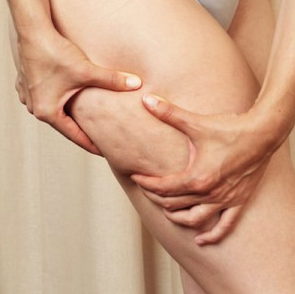Testosterone
Testosterone | The Hormone of Desire
Testosterone is a hormone produced by our ovaries, and production begins to decrease around 40.
It is actually the central hormone in the aging process. Our other hormones, progesterone and estrogen – specifically the estrogen called estradiol – are also important. Loss of these hormones is also known as menopause. These hormones begin to decline in response to the drop in testosterone.
Testosterone loss is a slow process for women so it often sneaks up on us. This is a quality of life issue for women as well as a health risk. But why do we experience such signs of aging when we’ve only lived half our lives? The answer is in our longer lifespans. Historically, women did not live long enough to reach the age of it’s onset. To put it simply, women now outlive their testosterone production.
Quality of life is the ingredient we must regain to be productive and
independent as we live into our 70s, 80s, and 90s.


Testosterone is actually a women’s most abundant hormone. It is our primary sex hormone, three times as abundant as estradiol throughout our lives.
If you have your ovaries removed or you are in natural perimenopause or menopause, your testosterone levels drop by 1/3 or more. Besides the bone and sexual benefits, it is also acts on the brain, muscles, liver and blood vessels, as it enhances cognitive functions.
The Aging Cascade
Although the change occurs more slowly in regard to testosterone release, it is common for women to produce fifty percent less testosterone after menopause than they did before peri-menopause began.
Although these changes occur in a similar fashion in every woman, the way that the body responds to that single chemical change can vary tremendously. Every woman’s internal physiology is unique, and many women begin to experience significant declines in physical health or sexual desire as a result of this hormonal change, although other women may not experience a significant change in sexual desire at this point in their lives.
Women that go through the process of hysterectomy or oophorectomy are at an even greater risk of experiencing issues as a result of low testosterone. Shutting down the ovaries separates the body from its primary source of endogenous testosterone, drastically reducing testosterone production to a rate far below a woman that has experienced menopause with her ovaries intact and otherwise functional.
Increased stress levels also have the ability to contribute to the early onset of the many symptoms related to peri-menopause as a woman approaches her early 40s. High levels of Cortisol, combined with low levels of testosterone, can directly lead to the development of the following symptoms:
- Reduced Energy and Increased Fatigue
- Brittle and Thinning Hair
- Increased Risk of Osteoporosis
- Atrophy of Muscle Tone
- Increased Development of Adipose Fat
- Reduced Libido
- Increased Wrinkles and Decreased Skin Health (Cellulite)

What causes cellulite anyway?
Women over 40 often complain about dimples in our upper legs, buttocks, hips and thighs also known as cellulite. Cellulite is a function of a low-oxygen environment surrounding superficial fat. When testosterone decreases, muscles shrink and do not demand as much oxygen. The fat cells lying on top of those muscles became hypoxic, or “starved” for oxygen, and they succumb to scarring in areas of connective tissues in response. These scars pull the skin down and “dimple” the skin overlying our hypoxic fat.
Treatments for cellulite are aimed at oxygenating the fat, and the best oxygenator is replacing the testosterone so blood and oxygen are drawn to the working and growing muscles. This heals the cellulite from the inside out.” The Secret Female Hormone.
Why don’t men have it? Men have a much thicker epidermis–the very top layer of the skin. A thicker epidermis makes male skin MUCH more resilient to structural change and dimpling, which protects it from cellulite.
Testosterone delivery. Pellet Implantation.
Originally, testosterone could only be delivered via injection but no longer. There are several delivery methods similar to the other hormones but pellet implantation has been used with great success in the U.S., Europe and Australia since 1938 and found to be superior to other methods of hormone delivery (Greenblatt 49, Mishnell 41, Stanczyk 88). It is not experimental. Pellets deliver consistent, physiologic levels of hormones and avoid the fluctuations of hormone levels seen with other methods of delivery (Greenblatt 49, Thoma 81, Stanczyk 88).
Hormones delivered by the subcutaneous implants bypass the liver, do not affect clotting factors and do not increase the risk of thrombosis (Notelovitz 87, Seed 00). Bioidentical testosterone delivered subcutaneously by pellets is cardiac protective, unlike oral, synthetic testosterone (Sands 97, Worboys 00)
Pellets are superior to oral and topical hormone therapy with respect to relief of menopausal symptoms (Staland 78, Cardoza 84). Estradiol and testosterone implants have consistently been shown to improve insomnia, sex drive, libido, hot flashes, palpitations, headaches, irritability, depression, aches, pains, and vaginal dryness.
Hormone replacement therapy with pellet implantation has an extremely low incidence of side effects (Cardoza 84, Barlow 86, Ganger 89, Pirwany 02) and high compliance rate (Gambrell 06). It has also been shown to be extremely effective in the treatment of migraine headaches.